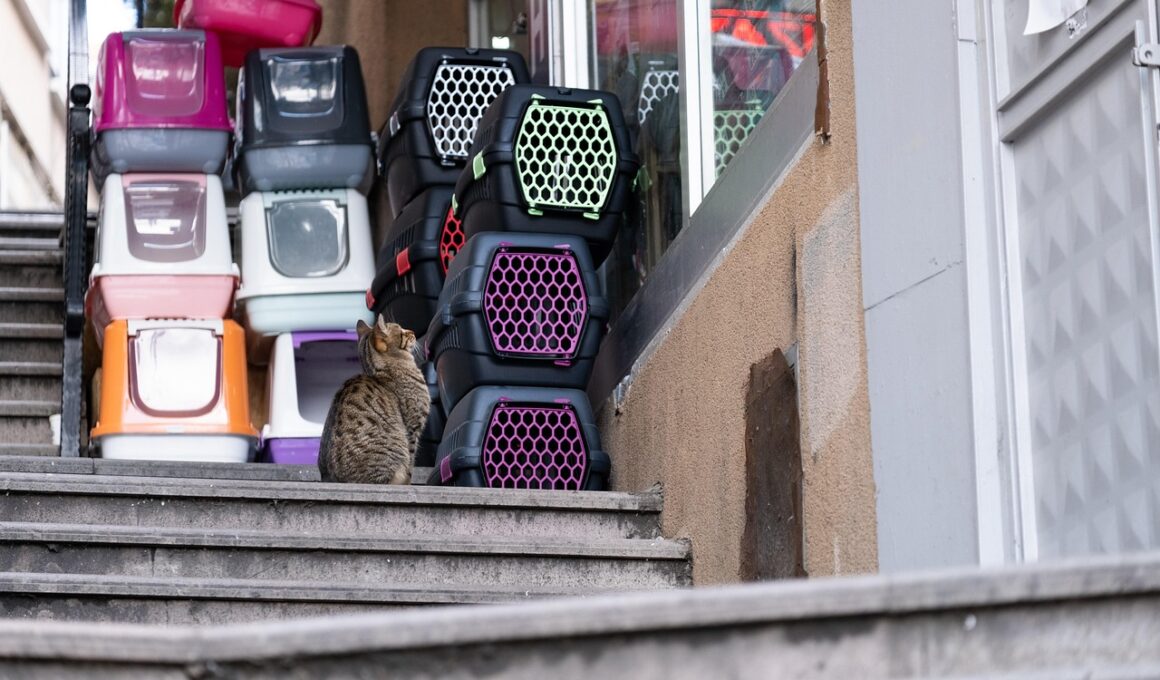From Shelter to Home: Using Integrated Litter Box Cat Houses for Rescue Cats
Rescuing cats is a compassionate act, and finding them a loving home can be transformative. During this journey, it’s vital to ensure their comfort and happiness once they transition to an indoor environment. Integrated litter box cat houses offer a multi-functional living space that suits these felines perfectly. These cat houses are designed to combine a cozy sleeping area with a hidden litter box, making them ideal for those new cats. Additionally, they save space and keep the environment tidy. This innovative solution addresses common concerns cat owners have, such as odors and messy litter. By providing a designated area that serves dual purposes, owners can create a more harmonious living space. Moreover, these houses cater to the innate behaviors of cats, essential for their mental well-being. Having a secure den helps them feel safe and reduces anxiety. Therefore, transitioning rescue cats into such environments can significantly improve their responsiveness to human interaction. Thus, understanding these benefits can help both the cat and owner develop a strong bond once the cat is welcomed into its new home.
Understanding the different designs of integrated litter box cat houses is crucial for potential cat adopters. Several styles are available to satisfy various tastes and home aesthetics. Some are constructed with durable wood materials, providing a rustic approach that blends well with traditional decor. Others may incorporate modern designs, featuring sleek finishes and contemporary colors. When choosing a cat house, consider the following: size, ease of access, and materials used. An ideal house offers enough space for the cat to move comfortably. Furthermore, it should allow easy entry to the litter box while being easy for the owner to clean as well. Popular designs include those resembling furniture pieces, providing an extra layer of utility to the living space. This allows the cat to have a separate area, eliminating the perception of clutter. The placement of litter boxes can sometimes promote territorial issues; thus, these integrated solutions can mitigate that concern. Furthermore, some models have built-in odor control systems, ensuring spaces remain fresh. Choosing the right integrated litter box cat house contributes to the overall success of a rescue cat’s adaptation to its new life.
Transitioning a rescue cat to an integrated litter box cat house can be an exciting yet challenging process, mainly if the cat is skittish. It’s crucial to make the introduction gradual. First, place the cat house in a low-traffic area, ensuring the cat feels safe and secure. This provides the cat with a quiet place to explore at its own pace. Once the cat starts showing interest, gently encourage it to investigate by placing treats inside the house. When it becomes comfortable with the living space, allow the cat to use the litter box. For some cats, this may take time, so patience is essential. Ensure that the litter used is familiar and unscented to minimize any aversion. Additionally, maintaining cleanliness is vital for creating positive associations. Consider observing your cat’s behavior to note any signs of stress or hesitation. If there are issues, adjust the house’s location or modify the litter used. Over time, most cats will adapt to this functionally designed cat house that promotes their privacy and fosters a sense of security. Behavior can shift tremendously towards a more affectionate demeanor in their new environment.
The Benefits of Integrated Litter Box Cat Houses
There are numerous advantages associated with integrated litter box cat houses that can enhance the experience for both the cat and the owner. Primarily, it helps in organizing the living space effectively. By keeping the litter box within a designated house, owners can limit litter spills and odors in common areas. This design encourages regular cleaning habits while maintaining hygiene, a critical factor in shared living spaces. Additionally, integrated houses save time by lessening the need for two separate items, making cleaning easier. Reduced litter exposure to curious cats and children is another measure of safety. The enclosed design dissuades inquisitive roommates from poking around the litter area, promoting a cleaner environment. Moreover, many of these cat houses come equipped with ventilation systems ensuring air circulation and odor reduction. Some even include a top platform where cats can lounge, heightening their enjoyment of the space. Integrated litter box houses undoubtedly elevate the living conditions of rescue cats. Not only do these solutions encourage proper litter habits, but they also support a more aesthetically pleasing home for feline enthusiasts and their beloved companions.
Incorporating integrated litter box cat houses can also have emotional benefits for rescue cats. These specially designed spaces promote security and comfort, essential for animals that may have experienced trauma. Unlike traditional litter boxes placed in open areas, integrated houses provide a sense of privacy. This safety net helps foster a sense of trust in their new environment. Many rescue cats often come with various behavioral baggage; this safe haven helps them adjust slowly. Behavioral changes are significant indicators of adjustment, and providing refuge is key to easing anxiety. Signs such as hiding or aggression might indicate the cat feels threatened, but with an integrated approach, many common fears can be alleviated. Its enclosed nature often encourages exploratory behavior, sparking curiosity and interaction within the home. Such engaging environments can help facilitate bonding moments between new owners and their furry friends. As rescue cats become accustomed to their integrated litter box cat house, they often display increased social behaviors leading to a rewarding human-animal relationship. The journey may involve patience, but the emotional growth seen in the cat fosters both companionship and happiness.
Choosing the Right Materials
The materials used for integrated litter box cat houses are critical in assuring durability and safety. Selecting non-toxic materials is a priority since cats may chew or scratch areas of their new home. Consider looking for eco-friendly options that also provide sturdy construction. Generally, solid wood houses come highly recommended for their stability and long-lasting nature. Additionally, look for those with washable surfaces, as hygiene plays a significant role in cat ownership. Paint or finishes should also be pet-friendly, ensuring that no harmful substances are present. Some integrated houses feature removable litter boxes or mats, aiding in the overall cleaning process. While researching, investigate how the house is assembled. Ensure that it requires minimal tools for setting up, promoting easy assembly. Lastly, pay attention to online reviews when purchasing integrated litter box cat houses, as they often reveal in-depth experiences from other cat owners. This feedback helps potential buyers understand the pros and cons of each option before making a commitment. Choosing the right materials ensures the integrated litter box cat house remains a safe and inviting refuge for rescue cats.
In conclusion, using integrated litter box cat houses for rescue cats not only enhances their transition to a new home but also enriches the lives of their human companions. Adopting a cat is a commitment that involves understanding and mitigating their unique needs. These integrated solutions offer functionality and cater to both cats’ instinctive desires for privacy and the owner’s quest for cleanliness. They bridge the gap between wanting to provide comfort while maintaining an organized home. Understanding the varying designs available ensures that potential cat owners can choose the most suitable option for their purpose. Additionally, offering a safe and nurturing environment can foster healthy emotional connections. Creating a fulfilling experience for the rescued feline reduces the likelihood of behavioral challenges, allowing for a more peaceful coexistence. As they adapt, these cats often become cherished members of the family. Therefore, investing in an integrated litter box cat house is an investment towards a better life for rescue cats. This choice reflects a responsible and loving approach to pet ownership, demonstrating commitment and intentionality in nurturing a rescue cat’s journey.



